Your guide to Online Reputation Management Talkwalker’s
Online reputation management guide - ORM - strategy to control online conversation so consumers find the best reviews and content about
April 9, 2019
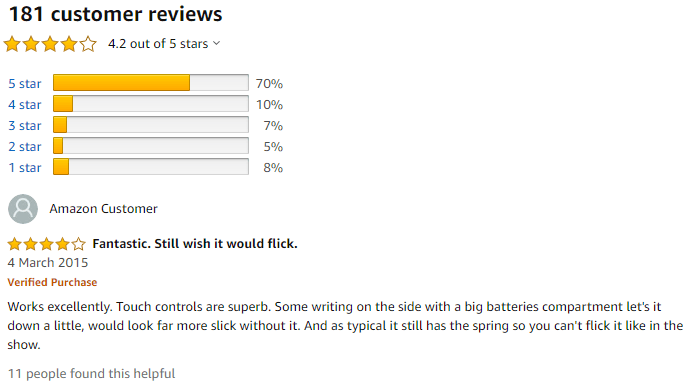
DOWNLOAD FREE CRISIS MANAGEMENT TEMPLATES
To help you deal with a potential reputational crisis, download two free crisis management templates. The roadmap you navigate if a crisis strikes, and a checklist in case of emergency. Back to my ORM guide...BTW - This ORM guide has been updated and republished. If you'd like to read the updated version - Best online reputation management tools & guide - scoot on over there now. It includes 9 of my fave free and low-cost ORM tools.
The challenge?
To listen to what consumers are talking about. To monitor what your competitors are doing. To anticipate where your industry is heading.Sounds like a big ask? You need a plan and the right online reputation management tools. One that’ll help you find every single online mention of your brand. Whether they’re in text, images, or video.
Measuring your current online reputation is the first step. Social media analysis pulls out all the data you need - competitor benchmarking, industry trends, consumer sentiment, influencer topics, etc. I’ve included a cracking infographic that walks you through 10 simple steps to social media analysis success. It’s the best place to start.
Are you up for it?
Why you need an online reputation management strategy
It takes time and effort to build positive awareness about your brand. It takes blood, sweat, and tears to maintain that good reputation. Damage it, and your business will suffer. Destroy it, and it’ll be fatal.
Your website may be pretty. Your SEO could be awesome. But if a potential customer searches and finds your brand with comments like - regret the day I purchased - terrible customer service - fell apart after a week…90% of consumers say that user-generated content influences their purchasing decisions.
You can see where I’m going with this, right?
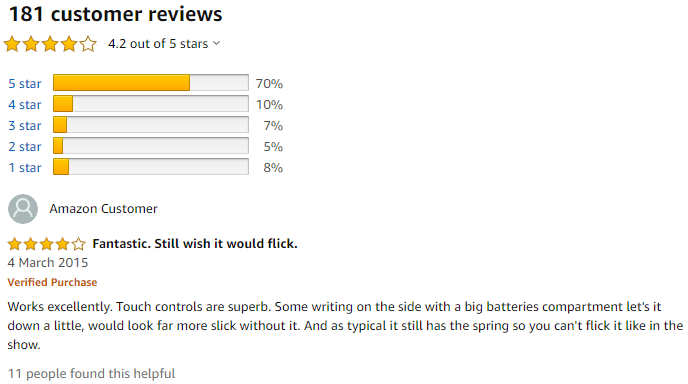
Social proof from users of Amazon, influences consumers purchasing behavior.
It’s not fire-fighting. You don’t have to cosy up to the press, or bury negative stories. What you have to do is improve online consumer reviews. Generate awesome new ones. Respond. Engage. Share happy consumers’ comments. Strengthen your brand’s good reputation and make it unimpeachable.
It’s called… online reputation management… ORM.
Warren Buffet - US business magnate, investor, speaker and philanthropist - said, “It takes 20 years to build a reputation and five minutes to ruin it”.
True.
Online reputation is your top marketing priority

“This guide illustrates the importance of online reputation management for businesses. Today’s customers are scouring the Internet to find out where they should spend their money and which companies deserve their business. In order to cultivate industry authority as well as earn and sustain consumer trust, you must make developing and maintaining an excellent online reputation your top marketing priority.”
Hersh Davis-Nitzberg | ORM Consultant & Social Media Influencer | RepairBadReputation.com
Brand transparency on the rise
If you want your brand to win. To be the choice of your target audience. You have to be open. Don’t make them hunt for information. Tell them everything they want to know. I don’t mean marketing-speak. Tell them about the origin of your company, your team, your products. Share your philosophy, and your roadmap for the future.
Be transparent.
The increasing need to be transparent about your brand, means that online reputation management has become essential.With more options available to consumers than ever before, they'll shop around and weigh up their options before handing over their cash. They’ve lost their naivety. They’re less susceptible to the quick promises and gotcha advertising of the past. Wanting more authenticity and understanding.
This isn’t about a quick sale, but a long-term relationship between the consumer, the product, and the brand.
Provide customers with as many details as you can about your policies, investors, structure, strategy, values, and anything else you think is important in defining your brand.The more open you are, the more likely you are to increase and maintain the trust of your customers.94% of consumers will be loyal to you if you offer complete transparency. 73% are prepared to spend more on your product if you’re open about all aspects of the business.Fail to be transparent, your consumers will go elsewhere. 74% of consumers in the 2017 Shopper Confidence Survey, said they would research online if they couldn't find the information they wanted from packaging and labels.
74%!!! That’s a lot of consumers to lose.
Be open. Be careful.The more open you are about your business, the more you leave yourself open to criticism. Yes, you'll gain significantly from brand transparency, just ensure your online reputation management strategy is in place.
Be ready to take the flak.
Online reputation management definition
Online reputation management is a project that has no end. It’s a strategy that builds and maintains your brand’s reputation.Hence… no end.After finding your brand online - accident/intention - your online reputation determines how consumers see your brand. Find good reviews, chances are they’ll do business with you. Find bad reviews, and you can wave goodbye. Therefore, online reputation management is about ensuring consumers find the positive. So much positive, anything negative will be drowned out.A little bit of negativity never did anyone any harm…
Consumers stop trusting you
Your brand equity is harmed
Sales drop
Customer churn increases
Share prices go down
Partnerships breakdown
Employees update their CVs
Should be fine...Seriously, you have to look after your reputation. Protect it. Nurture it. Build on it.
Who’s impacting your online reputation?
If you don’t control your brand reputation, who does? We’re talking positive impact and negative.
Negative impact
This one’s down to what your company’s doing. Or rather, not doing.
Zero or negligible presence on social media. I’m seriously hoping that this applies to at most, a handful of you. When we - consumers - research a product, we look online. We look on social. If your brand isn’t there, your competitors win. If you don’t engage, it looks as though you can’t be bothered.Would I buy your product? Can’t be bothered.
Ignoring consumers reviews and comments - good or bad. If your customers take the time to post positive reviews… say thank you. If they post negative ones, talk to them and try to solve their problem. 66% of consumers trust customer reviews. While 90% say that user-generated content influences their purchasing decisions. Start using users.
Web content that doesn’t provide value. Stuffed with keywords. Poor grammar. Overloaded with acronyms and industry jargon. Consumers visit your website to find out more, not to be bored, confused, irritated. It’s your online store. Make sure your team know their subject and your windows are clean.Or… watch your bounce rate increase.
Negative PR. A negative press release is as damaging as a negative review. Especially if it comes from a respected publication. You can’t stop it happening, but you can/should address it immediately. Set up Talkwalker Alerts - product name, brand, keywords, industry terms, C-level team - and catch issues before they become crises.Check out our PR Crisis Management Guide - it could save your brand’s reputation.
Your team going rogue online. Your team can be your best brand advocates. Or, they can be your worst nightmare. If they’re recognized as representing your brand, anything they say online can be seen as… your brand speaking.The trick? Keep them happy.
Positive impact
Present and engaging on social media
Customer reviews and user-generated content
Website content, blog posts, messaging that provides value
Journos, influencers, review sites posting positive articles
A happy team is a loyal team
See what I did there?
How to measure your social reputation
STOP!Before you implement your online reputation management plan, you have to understand how consumers currently see you.You'll need detailed social media analysis and monitoring. To make things easier for you, I'm sharing this cracking infographic with the 10 simple steps to social media analytics.
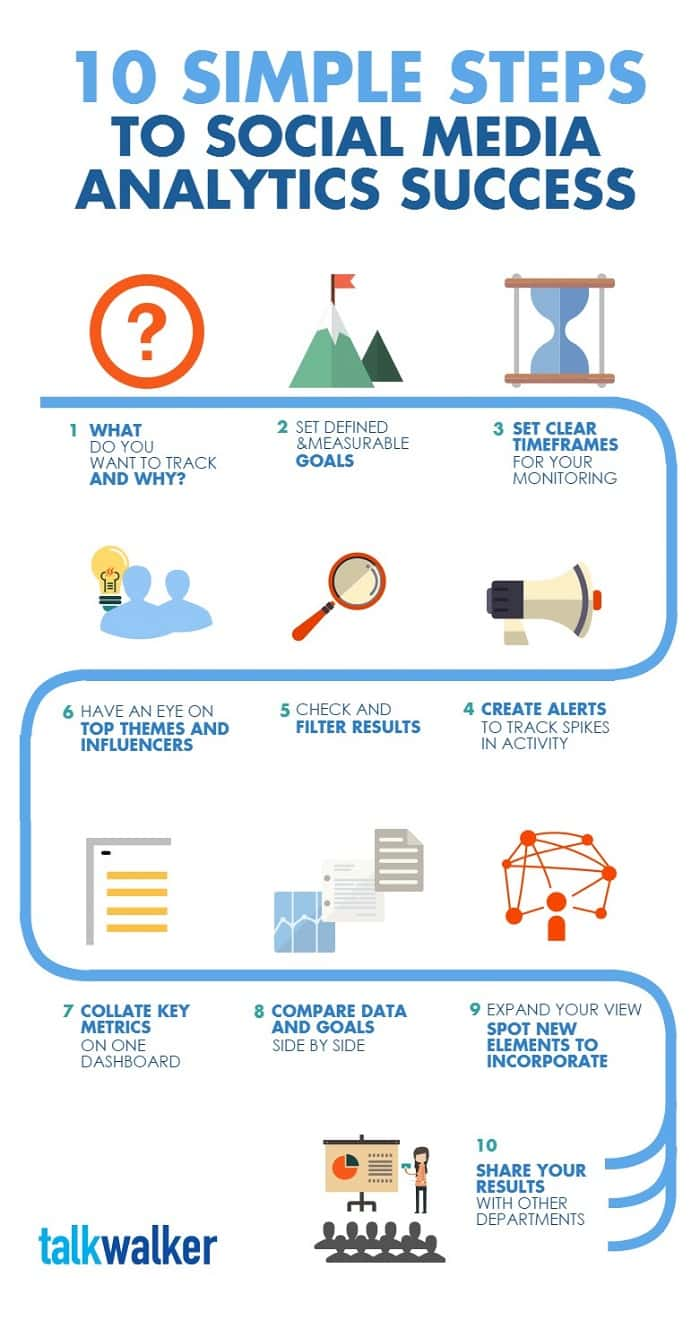
10 steps to a social media analytics win.
Decide what to track. To understand what people are saying about you, look at all aspects of your business.
Look at your past performance and that of your competitors. Set benchmarks.
Monitor, to keep an in-depth picture of your brand.
Set up Talkwalker Alerts to enable real-time monitoring and engagement.
Ensure your data is relevant with filters and detailed Boolean searches.
Monitor themes and influencers. What's your audience engaging with, and who’s diffusing that message?
Collate key metrics on one dashboard to make data easy to find and analyze.
Compare new data alongside goals, to highlight any changes in your audience sentiment.
Look at other industry trends or competitor actions that you should monitor.
Share your results with the relevant teams in your company.
Ten small steps to measure your social reputation. Owned and earned media, including social networks, online news outlets, blogs, and forums.Let's take a closer look...
Owned social media monitoring
This is all the content you create and share on your channels. Your website, blog, and social media channels. Driven by your content marketing and social media strategy.We gathered a group of experts, to share tips on building a social media strategy. Take a look! How much do you engage with your audience? What's the tone of your communication? These things will affect what consumers think of your brand. How they react.
Key KPI to track - positive vs negative engagement on your posts
People are commenting on your posts. Yay! But... are they positive or negative comments? Use sentiment analysis to discover the true feeling.
Key KPI to track - content amplification
Is your content so engaging that people are sharing it? Your reputation isn’t just relevant to your customers. It's crucial that your reputation is ranked highly by potential customers. You must amplify your content to reach and engage with them.
Earned social media monitoring
This includes any mentions that weren’t created by you but were organically generated by Internet users in the form of status updates, comments, tweets, articles, blog posts, etc. Shared on channels you don't own.
To get a wider understanding of what people are saying about your business, look at...
All terms related to your brand, including product names, hashtags, industry keywords, C-level, slogans. Everything that's significant to your brand identity.
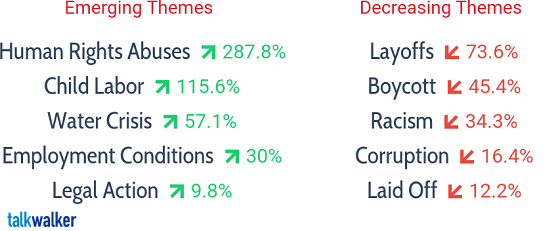
This company chose to measure industry themes that could impact their brand reputation.
Who's impacting on your business - positively - influencers - or negatively - detractors? They're sharing opinions about your brand, and people are engaging with those opinions and sharing them further. Great if they're raving about your brand. But, what if they're trashing you? You need to know who these people are. They will influence your audience. they'll impact on your reputation way faster than regular consumers.
What your competitors are doing. Who gets the most mentions… you or your competitors? Is your sentiment better or worse than theirs? What about engagement? Monitor these things and you’ll have a benchmark for your share of voice in the industry. So what? If you see a significant drop, you can react immediately. That’s why.
Monitor your brand and more
What are your competitors talking about? What are consumers saying about them? Understanding will give you benchmarks.You’ll identify gaps in your marketing that you may have missed - countries to target, new content ideas, product inspiration.
Benchmark your results against those of your competitors. Compare like for like.
What's your share of voice in your industry? who's the loudest, week on week? You or your competitors? Remember - important tip - if a business is top of mind, it's way more likely to win that final sale.
You have to go industry-wide. Otherwise, your brand is existing in a bubble. Track the key issues and trends that could impact your business. For example, a soft drink company should monitor all conversations about sugar and diabetes. Anything sensitive, that has the potential to blow-up into a major crisis. Listening to the conversations means that if the online chatter increases, the company will be prepared to react and engage.
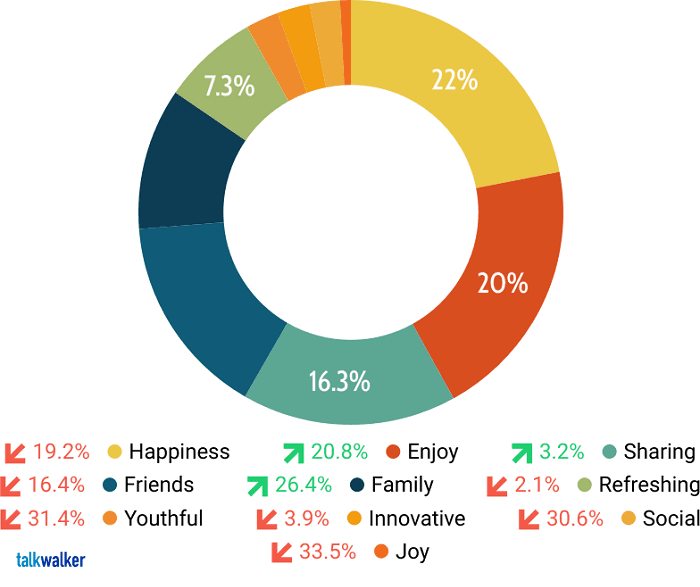
Sample soft drinks company measures brand keywords to understand brand perception.
C-level social accounts... performing well?
CEO, COO, CMO, CLO, CTO... what kind of traffic are they generating?
There are big names on social media, as more and more top-level execs drive social engagement. Hugely successful in business, they're also found their voices on social media. It's hard to ignore Elon Musk, Richard Branson, Jeff Bezos... they're loud and they're heard.
Unfortunately, there's a downside.“A CEO’s personal opinion can quickly turn loyal customers against them and the fallout can live forever in search results.”
Think back… a CEO displaying increasingly erratic behavior. Peaking with a pot and whisky fueled interview ONLINE! It went viral. Stocks plummeted. Key executives quit their jobs.What you don’t want to go viral… WILL ALWAYS GO VIRAL!
Monitor their accounts in case they go rogue. Look for red-flag content that could cause controversy or bring your company into disrepute. Ensure your C-suite execs understand how much power they wield on social media. For good, and for bad.
Online reputation management tools - image and video recognition
Online reputation management tools are essential. Along with Alerts, Talkwalker's image and video recognition technology will ensure you find every mention of your brand online. Even when your brand or product has not been mentioned in the text.Your logo is one of your major assets. It's unique to your brand, and it must remain that way. If abused by others, your reputation will be damaged, your brand value diluted. It's vital that you monitor how it's being used.
Some stats...
80% of posts, with logos detected in images, contain no text mention of the brand.80%!!!
Globally, videos will make up 80% of all online traffic by 2021.You ready?
BTW... are you ready to be part of the 80% using video marketing? Increase conversion by 80%? Boost brand awareness by 54%? Seriously, don't get left behind. Download your free video marketing strategy template and get planning today!
— Beautiful Bud (@Beauty_Buds) August 3, 2017
Prevent people abusing your logo and using it for counterfeit goods.We offer logo recognition for mentions in text, images - even without a text reference, and in video. This last one is new, and a first for the social listening industry.
The best ice cream on earth. pic.twitter.com/05Dz5DnU3u— Jonathan (@jpboogie2381) March 9, 2019
No brand mention.
What other aspects of your reputation should you monitor?
SEO and reputation management
If I search for a company, I’m not looking in the phone directory. I’m not checking out business cards. Filofax went out of fashion. Electronic organizers died a death.
I’m searching online. I’m reading online reviews. I’m looking at social media profiles.
What results will I see when I find your brand? It’s going to impact how I feel about your company. How consumers think about your brand.
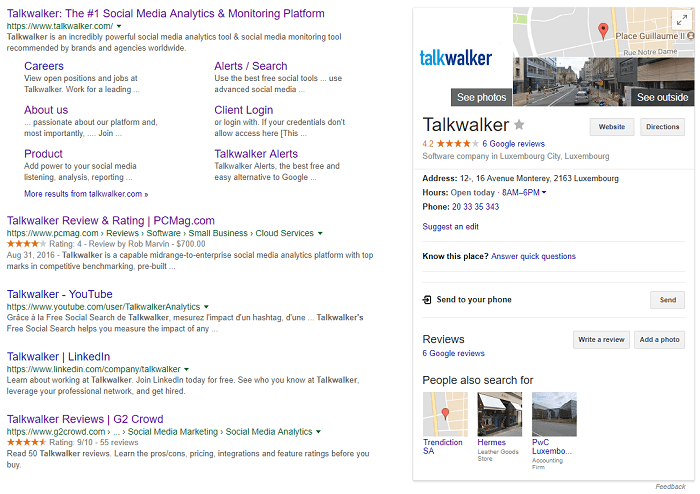
Google a brand. What do you see in search results? Reviews, social media accounts...Consumers will find...
Reviews and review sites
News stories
Related wiki pages
Press releases
Competitors’ results/paid ads
Blog posts about your brand/products
Websites and articles that mention your name
Your social profiles, plus social mentions of your brand
Ensure your content is value-driven, credible, resonates with consumers. Include keywords relating to your brand, your industry, and used by your target audience. Search engines will rank you higher in search results.Dictate what they find.
FREE MARKETING STRATEGY EBOOK!
Don't forget to download your free eBook.Top tip - Google isn't the only search engine!
Over a third of online searches are made elsewhere. Determine how your results vary on other search engines - Bing, Yahoo, Ask, AOL, Baidu, Yandex, DuckDuckGo, etc.
Your review reputation
Onto your reviews.
66% of consumers trust reviews, 12x more than brand content.
You can’t ignore the stats, and these prove that consumers search online for reviews of products that they’re considering purchasing. You must manage your reviews. Control them, and encourage new ones.You’ll need to set up Talkwalker Alerts so you can find the reviews as they’re posted. If they’re negative, you have to respond and solve issues as quickly as possible. If they’re positive, you gotta say thanks.
Consumers expect a response, when they leave a review. Don’t keep them waiting.
Top tip - find your industry-specific reviews
To find the review sites that relate to your industry, enter your “business industry” and “reviews” into the search engine. For example, a toy store would search for “toy store reviews”.

Yelp is the dominant review site for toy stores, with Google reviews and Reseller Ratings.
How to fix your online reputation
You should now have a detailed picture of how your brand - and anything related - is perceived online.
Before you can concentrate on reputation monitoring (and brand protection), resolve any obvious reputation issues that could be affecting your brand. Done? Now check out my 10 ORM best practices...
10 online reputation management best practices
1 Owning the social channels your target audience use
How big is your social presence? Are your competitors using channels that you're ignoring? Oops!Is your audience using channels where you have no presence? BIGGER OOPS!!!
2 Complete a regular social media auditUpdate everything that needs improving. Trash anything that’s under performing. Analyze your social media strategy and exploit each channel to the full.
Brand consistency boosts trust. If your Twitter bio states that you’re the “Number 1 shoe store”, while your Facebook Page reads, “one of the biggest shoe stores”, you’re weakening your brand identity. Consumers will doubt your brand.If you find anything in your analysis that is detrimental to your brand, clean it. If you've shared posts on your own social media accounts that contradict your message, delete them.For negative posts that you don't have control of, take a look at how to get things deleted from the Internet.I wouldn't recommend deleting negative comments. You could escalate a poor review into a bigger issue. Stick with serious items that are unjustified or libelous to your business.
3 Consider your brand voiceTo improve your social media strategy, check out your brand voice. What your brand says. How it speaks. The language it uses. The tone. The key to success on social media is to create engaging and relevant posts that resonate with your audience.A cute cat post is fun on your own Facebook page. Your mates will love it. On the page of a finance company? Not going to work.Social analytics will reveal which posts your audience engages with. Find the most popular, and replicate in future content.
If you haven't created your buyer persona, now's the time to do so. Representing your ideal customer, based on real data, a buyer persona will help you learn your audience's motivations, behavior, goals, and pain points. You can download a free buyer persona template now, and learn to speak their language.
Your tone of voice will depend on your industry, your audience. your brand style. Just make sure you're consistent.
A bank should sound professional. Hey, they’re looking after our hard-earned cash, I don’t want to see amusing GIFs.
A fast food restaurant will get away with being sassy. Even getting away with being sarcastic.
Find new friends.— Wendy's (@Wendys) January 3, 2017
Depending on your industry, tongue-in-cheek humor can work well.
Online reputation management demands authenticity. Vital if you want to maintain brand transparency. Which you do... of course.
Establish social media guidelines for your brand...
Social media guidelines will help your brand avoid blunders. Keep them flexible, to allow for changes. These social best practices will guide your team, your company voice, the language you use. Guidelines will give context to your social media strategy.
A social media policy is stricter. Your team has to follow the policy, no question. A comprehensive policy will help you avoid legal issues and security problems. It’ll explain how your team should behave online. It’ll protect your brand’s online reputation.
4 Respond and acknowledge all mentionsEngage with your audience on social media as much as possible. You have to show your audience that you're listening.
Respond to everything. Not just compliments and complaints. Even if you can't see a benefit to your business. It's all about making people feel part of your community.See... there's the benefit.
5 React immediately
Speed is of the essence.
The sooner you find a post and engage, the sooner you can deal with any negativity. Tweets can spread faster than a virus, and be devastating to your brand.
Set up Talkwalker Alerts to ensure you find issues in real-time. Hunt down negative comments and catch them before they go viral.
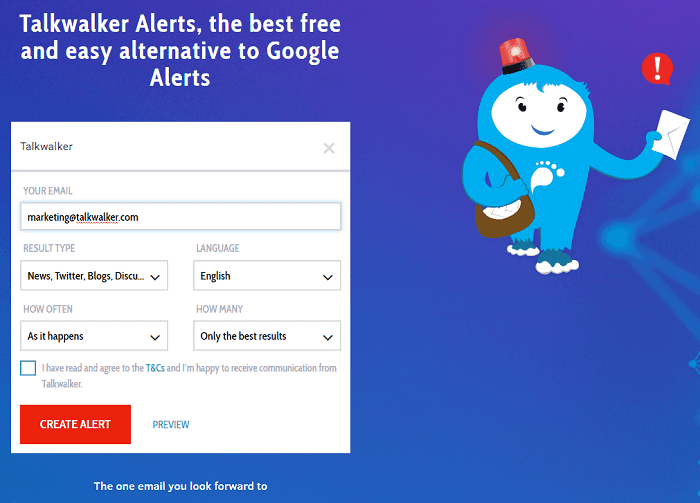
Search for your brand, products, keywords, key personnel, competitors, industry news.
Talkwalker virality map - watch how an article about plastic particles in bottled water, spreads across traditional and new media.
6 Create content that engages and adds valueEngaging content will improve your social reputation. Encourage user engagement. Promote your messages.Bonus... search engines love unique, value-driven content, and rank it highly in SERPs.
If your website has a blog, you can get 434% more indexed pages. More indexed pages, means more leads.
Don't forget to include keywords on your web pages. The words that consumers are using when they're talking about your industry. Makes it a whole lot easier for them to find your website.
7 Outreach your content to external sources
Consumers are immune to brand-speak. We’re not listening anymore. Marketing messages leave us cold. So many brands… they can’t all have the best product on the market. We stopped believing. We stopped trusting.It’s time to get other people to say what they think of your products.Engage external sources and encourage them to share your content, or write their own. 86% of millennials say that user-generated content is an indicator of brand quality.Powerful stuff!
8 Listen to criticism
Don't delete or ignore your critics. Respond to them.Look at who the main detractors are, and resolve their issues. We're back to brand transparency. If there’s a question about your brand visible online, you should be the one to answer it. Consumers are looking for brands to respond.
Here's McDonald’s responding to ongoing criticism of its chicken nuggets recipe, with a cross-media campaign promoting their 100% chicken breast contents.Neat.McDonald's fights fire with fire. Or should that be flame-grilled?!!
9 Don't delete negative content, bury it
If you can’t delete negative content, or turn it into a positive... bury it. 8.5% of people will go to page two of a search. With only 3.7% going beyond.If you fill your search results with positive news stories and content, you'll push detrimental content into the search engine graveyard.
10 Use influencers to increase positive sentiment
To create more positive conversation about your brand, look at those who make a career out of being online. Influencers.Use them for brand endorsement, to boost brand awareness. Ask them to write original content that their followers will love and share.
Take a look at our Ultimate Influencer Guide for more details on how to create a winning influencer marketing strategy.
How to fix your reviews
When monitoring your reviews, you should consider...
Reviews matter
Reviews are significant to your reputation. 94% of consumers said they would use a business with a four-star rating. While only 57% would use one with three stars.Move your business up one star level, and you could improve your sales by 65%!
Engage with your complaints
Acknowledge complaints. Always. Respond quickly to minimize damage. Not only will you stop the negativity spreading - bad news travels at supersonic speed - you'll demonstrate to potential consumers that you’re a proactive and attentive brand.
Please keep it professional. While your tone of voice on social can be relaxed, for reviews... if you fight fire with fire - you’ll only get burned.

Never ignore complaints.
Don’t delete bad reviewsConsumers expect to see bad reviews. If you delete them all, you’re not being transparent. 30% of consumers assume online reviews are fake if they don’t see any bad scores.Ask for good reviewsEncourage happy customers to leave positive reviews.
2 bad reviews + 8 good reviews = 80% positive
Add 10 good reviews into the mix, your score will increase to 90%. More positive reviews, will reduce the significance of bad ones.
How to develop your ORM strategy
It never stops. You’ve built up your reputation online, but it only takes one crisis to damage it. Possibly, destroy it.You ORM strategy should include...
Continued monitoring
Don't stop using social media listening. Your audience may have been raving about something yesterday, and today they're trashing it. Set up Talkwalker Alerts to notify you of stories related to your brand that are getting traffic. Include keywords for your industry and competitors. A looming crisis can come from anywhere, and if it's affected your competitors, chances are your brand will feel the force.
Ensure all relevant teams in your company have the information they need. If you want to respond fast, you have to have all your teams up to speed.
— Olman Hernandez (@OlmanHernandez) March 3, 2016
Set up a Command Center to monitor all brand mentions in real-time.
Set crisis thresholds
Before you can manage a crisis, you need to understand what constitutes a crisis. Before panic sets in, ask...
Will this issue critically affect my company’s workflow or send the board into a frenzy?
Will our bottom line be disrupted?
Will our brand reputation be damaged - stakeholders, customers, partners, prospects, industry?
Would you consider all of the above a disaster? Occurring separately, your brand would ride them out. Even a couple would be manageable. All three?CRISIS!
Make a crisis plan
Every company should have a crisis management plan. It doesn’t matter how careful you are, a crisis will happen.
The trick?
Be prepared.
You’ll need holding statements, trained spokespeople, social media monitoring, crisis alerts, role play… you’ll need to read our Crisis Management Guide.
There are three stages of a crisis… before, during, after. Our guide walks you through the 11 steps to tackling a crisis, and coming out a winner.
Plan ahead
Create a crisis response team
Draw up your crisis management plan
Create holding statement templates
Use comms and intelligence
Choose your crisis tools
Identify influencers and brand ambassadors
Establish the facts before you speak
Accept responsibility and apologize
Write crisis messages
Choose channels of distribution
Read the guide!
Takeaway
Done.
In this brand-transparent world, your business is wide open to criticism and complaints. With an online reputation management strategy, your brand will be protected. You'll understand how consumers feel about your brand.
To help you deal with a potential reputational crisis, download two free crisis management templates. The roadmap you navigate if a crisis strikes, and a checklist in case of emergency. Enjoy!
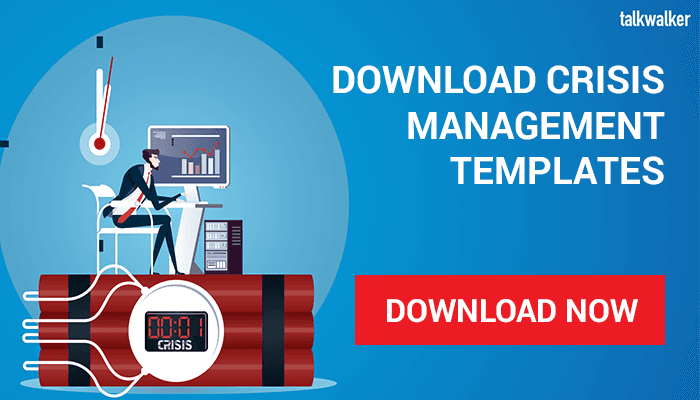
Related articles

What is social media intelligence?
Social media intelligence - Stop checking your fan growth chart daily and discover how to make informed decisions.
Read Now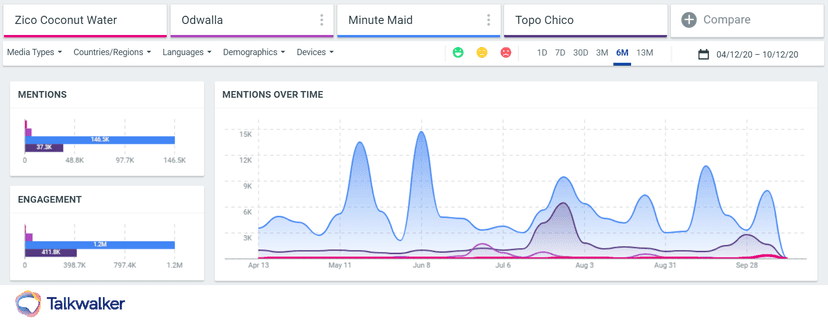
5 consumer insight examples to improve your CPG brand Talkwalker
Consumer insights and CPG examples to ensure brands understand their customers to increase revenue and sales while
Read Now
The 5 benefits of B2B social listening
Move over B2C. There's loads of benefits to B2B social listening. In this blog, we show you 5 ways you can boost you B2B business with social success.
Read Now
